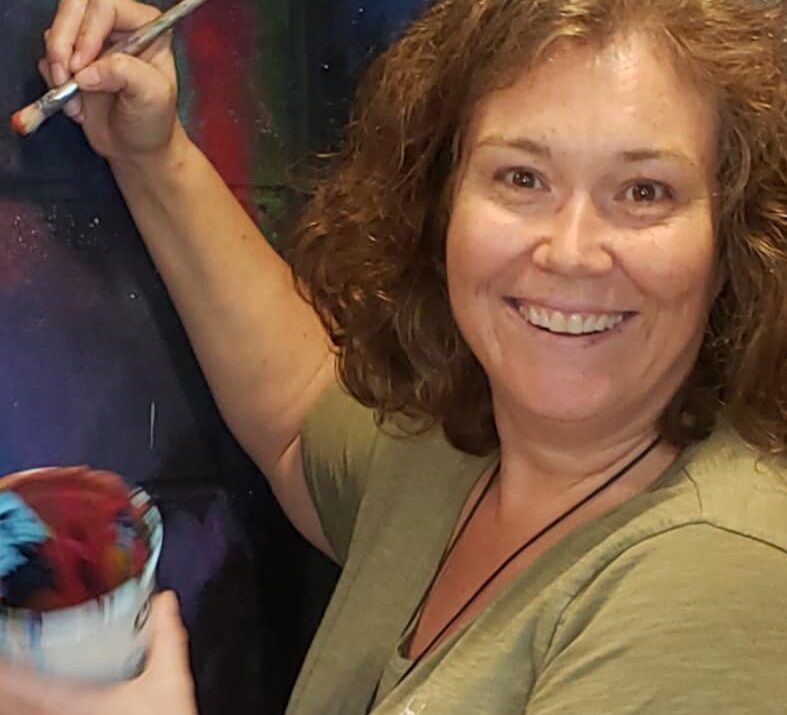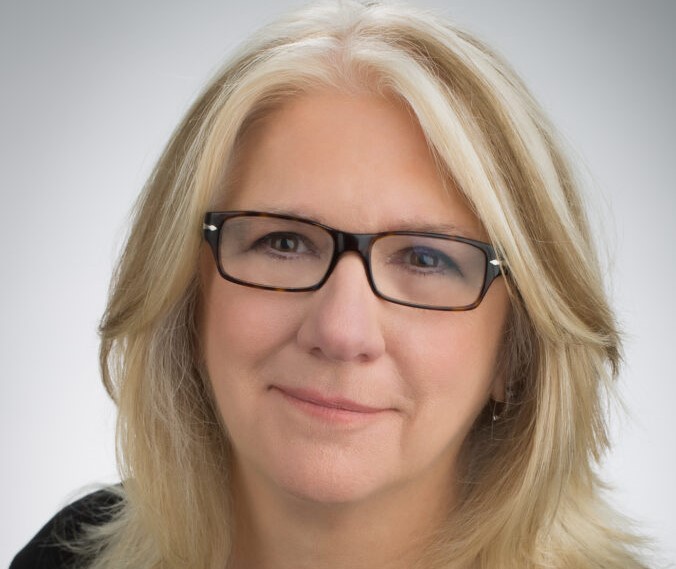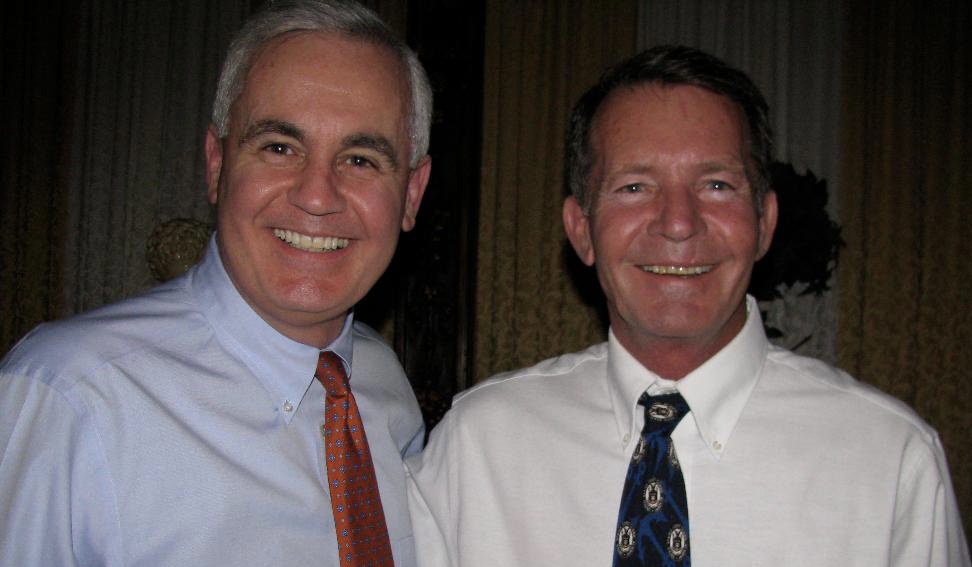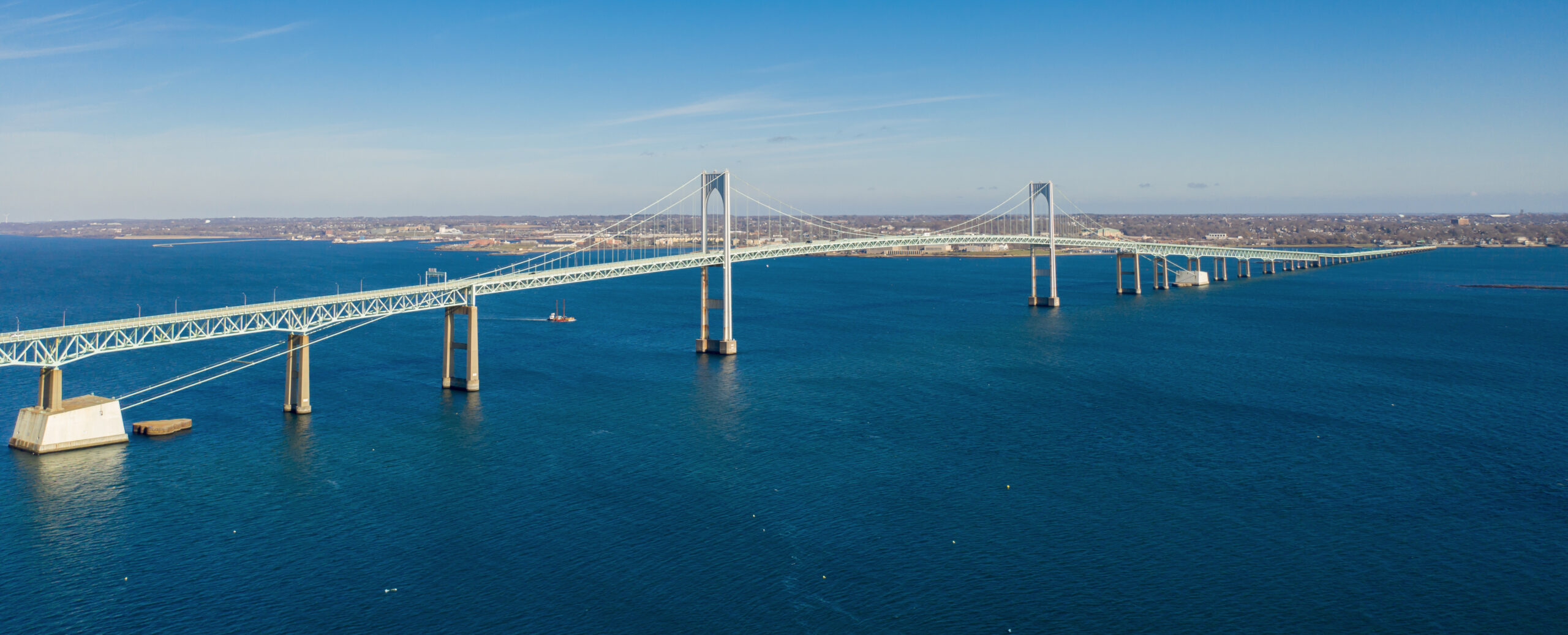‘Creative energy is Divine, and we all need to tap into it.’
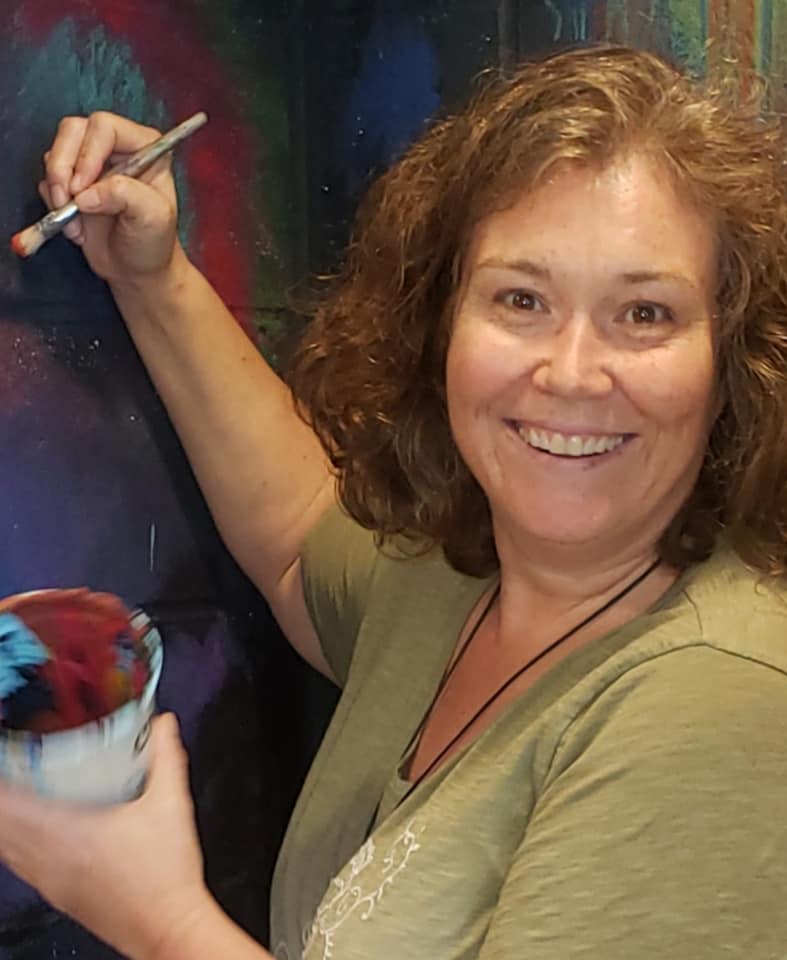
Susan, thanks for sharing some of your story with us. Let’s start with your childhood and education that set you on the path to being an art teacher at Juanita Sanchez Educational Complex in Providence. Some detail, please.
Art making and creative energy have been a major part of my life since I was a little kid. I loved imaginary play, and I loved making pictures with a variety of art materials, especially crayons and paint because of the way my hand and body felt when I used them. The tactile part of making art has always been important to me. As a small child making art, I often imagined that I was a somewhat famous artist, but also beleaguered and usually a man with a beard, and that I needed solitude to perfect my creations. I also imagined that I would then sell my art to an adoring crowd. I’d be in bed late at night coming up with lemonade-stand-type marketing strategies. This part of me that was into selling my art was a businesswoman. I was very young when I would play like this, so I’m not sure how these visions came to me.
In elementary school, I won a couple of art contests at Daniel D. Waterman Elementary School in Cranston where I grew up. During these elementary school years, I attended Saturday morning classes at Rhode Island School of Design. Art was solidly part of my life and by about third or fourth grade, art was starting to become part of my outward identity. I attended Park View Junior High School, also in Cranston, and then graduated from Cranston High School East, where I had much success as a visual art student, while also being heavily involved in the theater program with set-design and stage management.
After high school, I went to Bard College in the Hudson Valley region of New York state. I started as an art major there but didn’t graduate. I temporarily dropped out of college to focus on personal life explorations. When I re-entered college, it was at Rhode Island College. I was a double major in studio art and art education. At this point, I didn’t intend to become a teacher, but my Mom was adamant that I graduate with a degree that could lead to a job.
I graduated from RIC in December 1995 with a BA in Studio Art and a BS in art Education. After several years, while teaching at Perry Middle School in Providence, I went back to RIC and while got an MA (Master of Art in Studio Art with a concentration in Art Education). My master’s thesis was titled, “Re-Imagining Art Education: The Art Classroom’s Potential for Healing in Urban Education.”
Did you have any mentors along the way that you’d like to mention?
I’ve had the good fortune to have learned and to be learning from many. Over the years, I’ve been able to find the mentoring available in a multitude of moments. I’ve been taught by fellow humans, as well as other beings and entities.
For those who might not be familiar with the school, give us an overview of at Juanita Sanchez Educational Complex.
Juanita Sanchez Educational Complex is a Providence public high school on Thurbers Avenue on the Southside. Our school has gone through many changes and challenges over the years. I have been there through all of them, as I am one of only three teachers left from the earliest days of the school when we opened in 2001 in a temporary location in downtown Providence. In September of 2003, we moved to our brand-new building, where I have a big, beautiful classroom art studio with lots of windows. My students come from all over Providence, and there’s been a large percentage from the immediate neighborhood. They are wonderful kids with huge hearts. They’ve been an important part of my life, in a spiritual sense. They’ve often showed me new directions on my life’s path, held space for me when I couldn’t find the path, and comforted me when I’ve fallen.
This coming year, September 2024, we are once again changing. We’ve been in a re-design process with Rhode Island Department of Education. The school will be called the Juanita Sanchez Life Science Institute. We will have biomedical and computer science pathways. We are expanding in many ways. I’m very excited that we are adding a theatre program and that I will be incorporating my learning from Salve’s Expressive Arts post graduate program into my visual art curriculum.
We’ll get back to the school in a moment, but before that, let’s get into some of your art. Tell us about “Fluid Phoenix.”
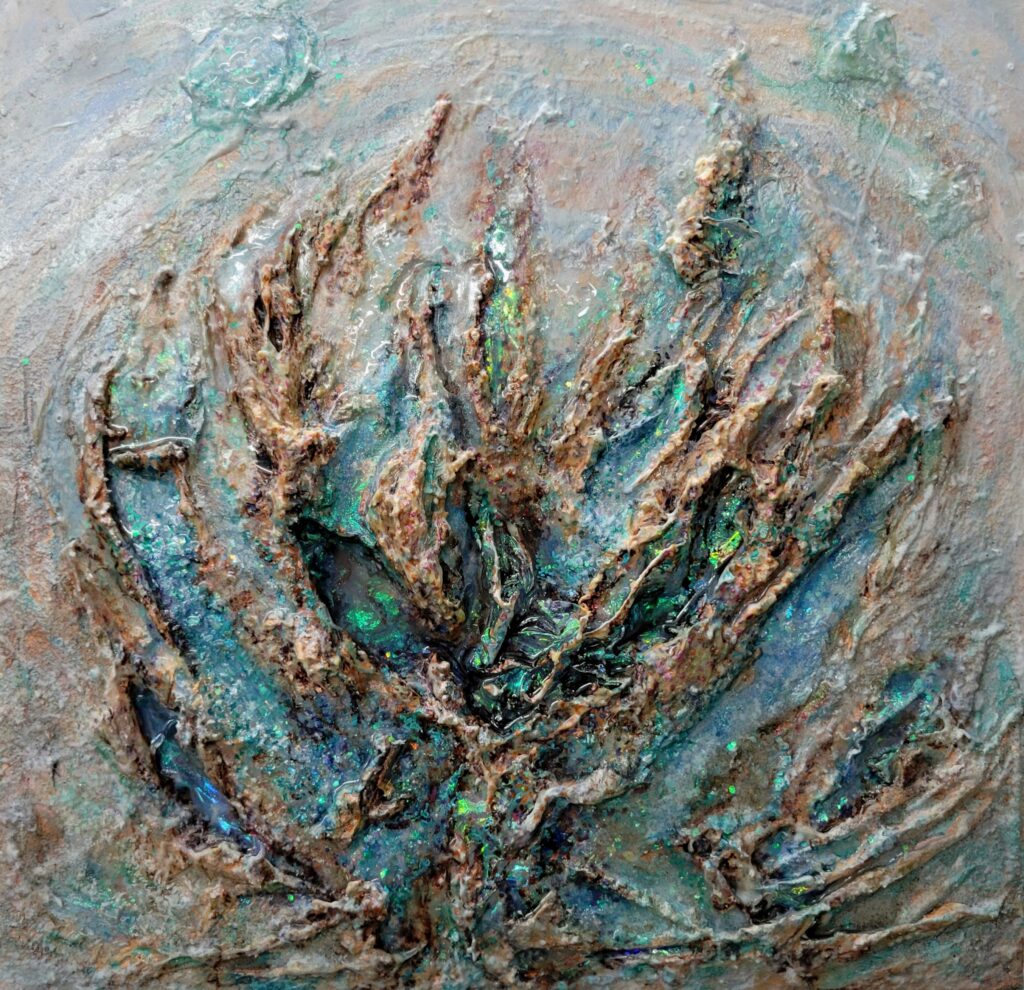
“Fluid Phoenix” is the first completed piece in a series that I’m doing that explores the emotional landscape of marginalized bodies. I’ve become very interested in the way that fluids move through our body and, also, how sometimes these fluids can become stagnant and cause problems, including physical and emotional pain. I’m investigating the connection between water and emotions with the hope that it will bring me understanding and healing that I can then share.
And “Crevicular Tumble.”
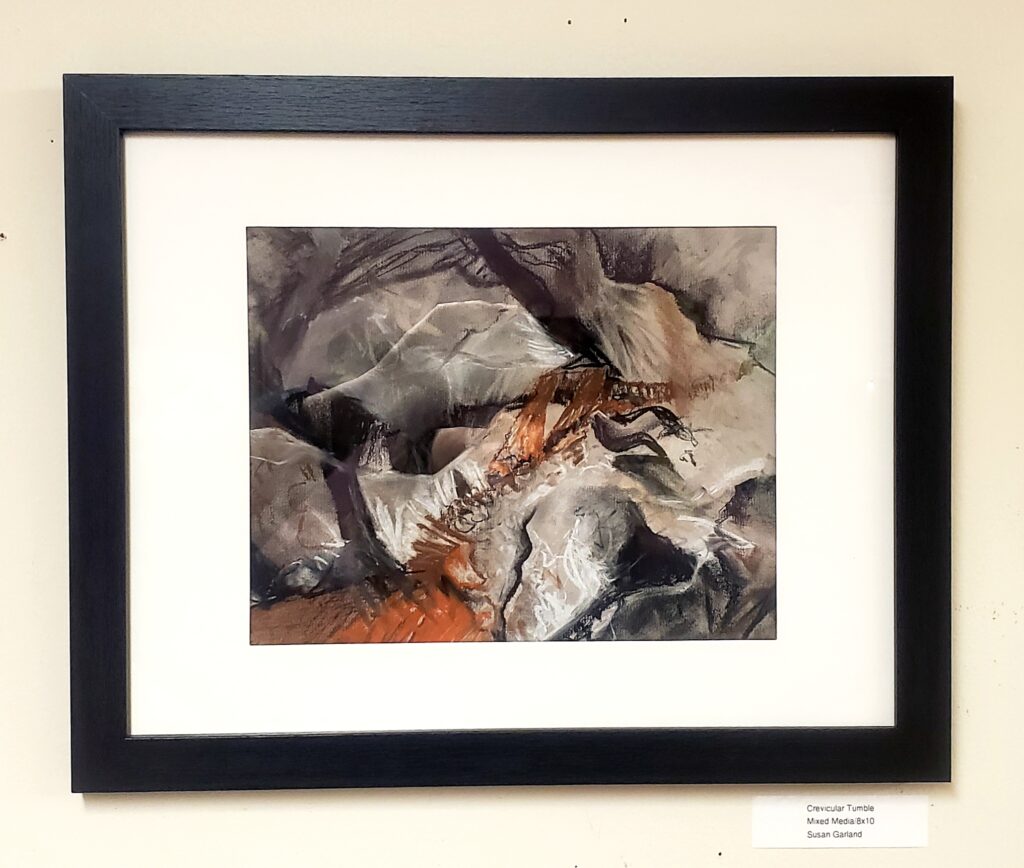
I drew “Crevicular Tumble” on a walk at Lincoln Woods in November of 2019. At the time, I was experimenting with drawing while walking. I would move very slowly and draw on smaller papers attached to a clipboard. In this piece, I found a grouping of large boulders that I thought were piled in a fun way. It looked like they were playing and tumbling with each other. As I walked slowly around the rocks, I needed a place to focus my vision. I fixed my eyes on the space between the large bodies of stone and drew from the crevices. It’s the edges that capture my attention and anchor my reality. In the cracks I find space to dance and breathe.
And “Shelter.”
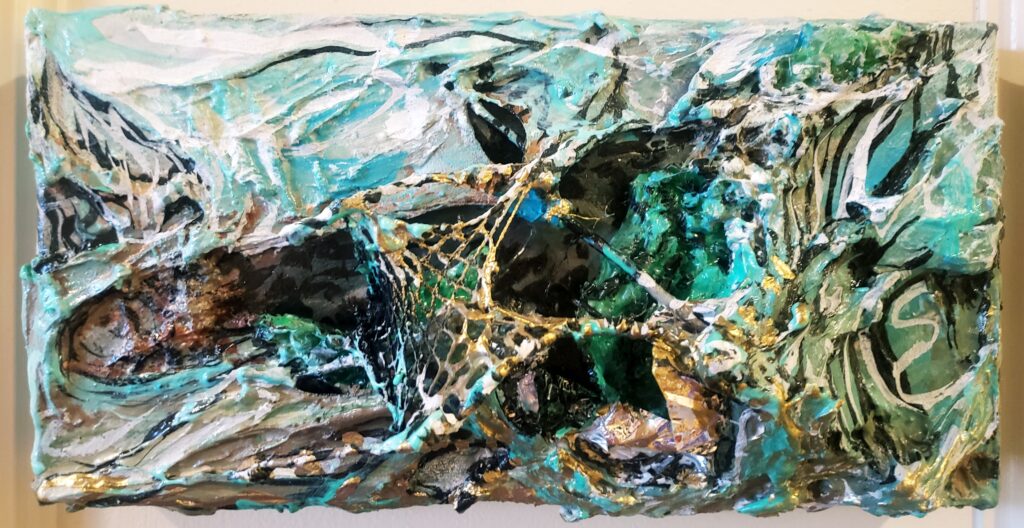
I made “Shelter” after a solo camping experience in May of 2019. It was freezing cold at night, literally temperatures in the low 30s. But in my tent, I was warm. I had prepared for the cold and brought everything I needed to survive comfortably by myself using just the heat of my body. It reminded me of another time that I almost drowned in a rip current but was saved by the buoyancy of my body and my persistence. I’ve survived several near-death experiences through my life. My body has been heroic. “Shelter” is a mixed-media piece made from some of the odds and ends that I’ve collected from these experiences.
Another recent piece that feels important to share is “I Protect Her.”
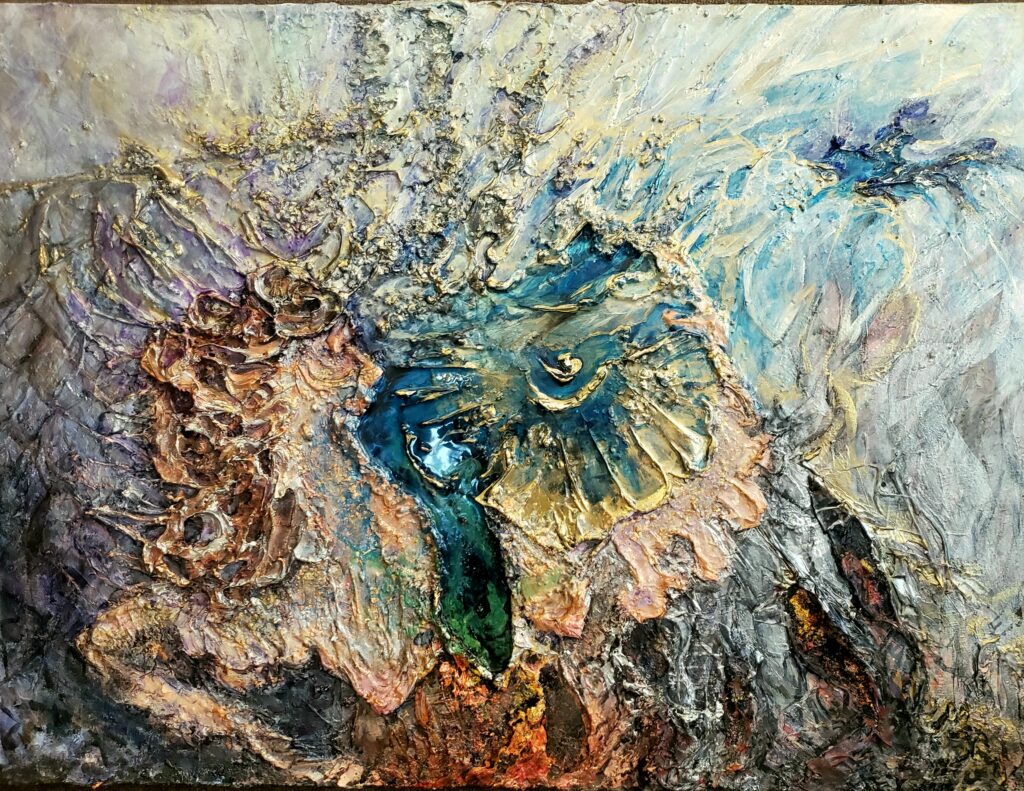
It’s about me being intentional about strengthening my voice as a way to protect myself. I began this work in 2018. It’s won an award as well as praise from friends and family. I still feel that the intention is a work in progress, though. I have the painting hanging in my living room as a reminder. I keep learning from it, so my process continues. The power of the arts is infinite.
We found your artist statement that accompanied a 2019 exhibit at the University of Rhode Island gallery in Providence. Part of it read: “So much of my existence has unfolded in relation to a system that does not affirm me. Yet I’ve learned to feel the deep love in our Universe because I understand that love’s full expression is not just light and clarity but often shadow and mystery.” Very powerful. Now back to Juanita Sanchez. What do you instill in your students with art?
Several years ago, I had a realization. What’s been consistent for me as a teacher over the years is my desire to make things better for my students. It hasn’t always happened, which has brought some difficult mental health consequences to me. But I realized that I can hold space for whatever needs to happen. And I can have faith that it will happen eventually. Now my mission is to inspire future revolutionaries. I don’t know the specifics… the how, when or who. I do know that it’s happening.
This is a link to a Facebook post about a large, multi-wall mural called, “The Buoyancy of Black Joy.” This is an important mural at the school that has an interesting story. I think it helps frame the social justice aspect of the original murals at JSEC.
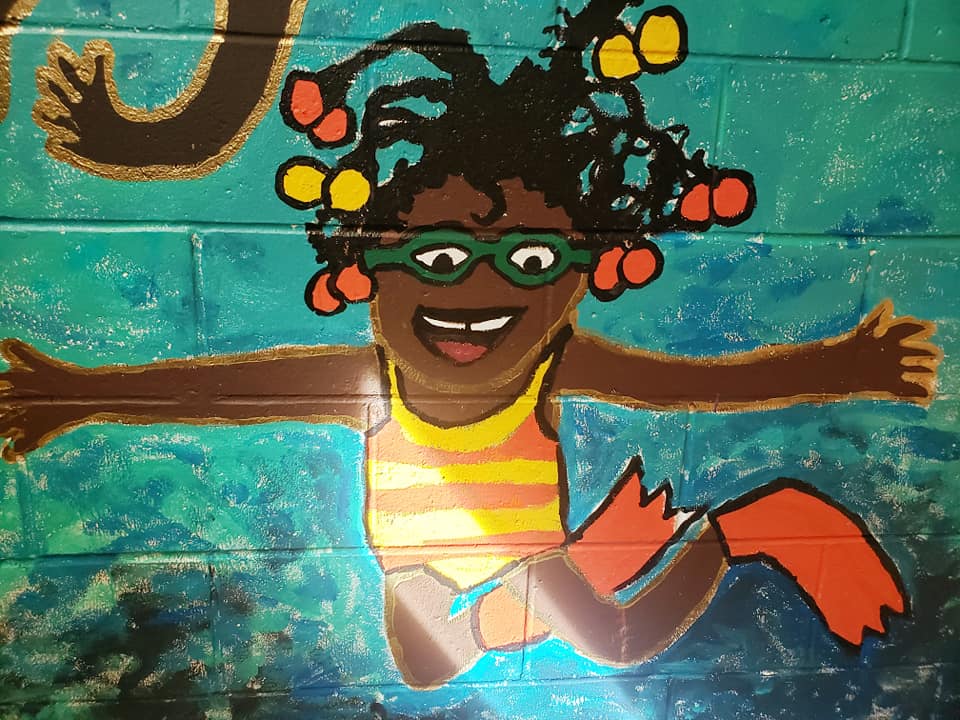
I have great relationships with my students. They react all different ways on all different days. They’re not always easy… and they’re not supposed to be. I have a quote taped to my computer monitor at school: “Never feel sorry for raising dragon-slayers in a time when there are actual dragons.” I’m sorry I don’t know the source of the quote, but I think the sentiment is too important and applicable not to share it.
We perused some of the student art from this past academic year, hallway murals and canvases. All were beautiful and inspiring. One piece depicts a person pointing to what appears to be a shooting star and the words “Relax With Me. Breathe With Me. Enjoy the Moment.” Tell us about this one.

This mural is by a young artist who, like most of my students, has some serious challenges. Yet he is a warrior for joy. I’ve met very few people who are so capable of finding the laugh and the light in any situation. This student painted us a lesson in this piece. In his loving way, he showed us how he takes the time to enjoy each moment, in hopes that we’d all relax and breathe with him.
Another has flowers against a pink background and these powerful words: “Worry about loving yourself instead of other people loving you. Beauty is an attitude. I am not perfect but I’m always myself.” Again, tell us about this.
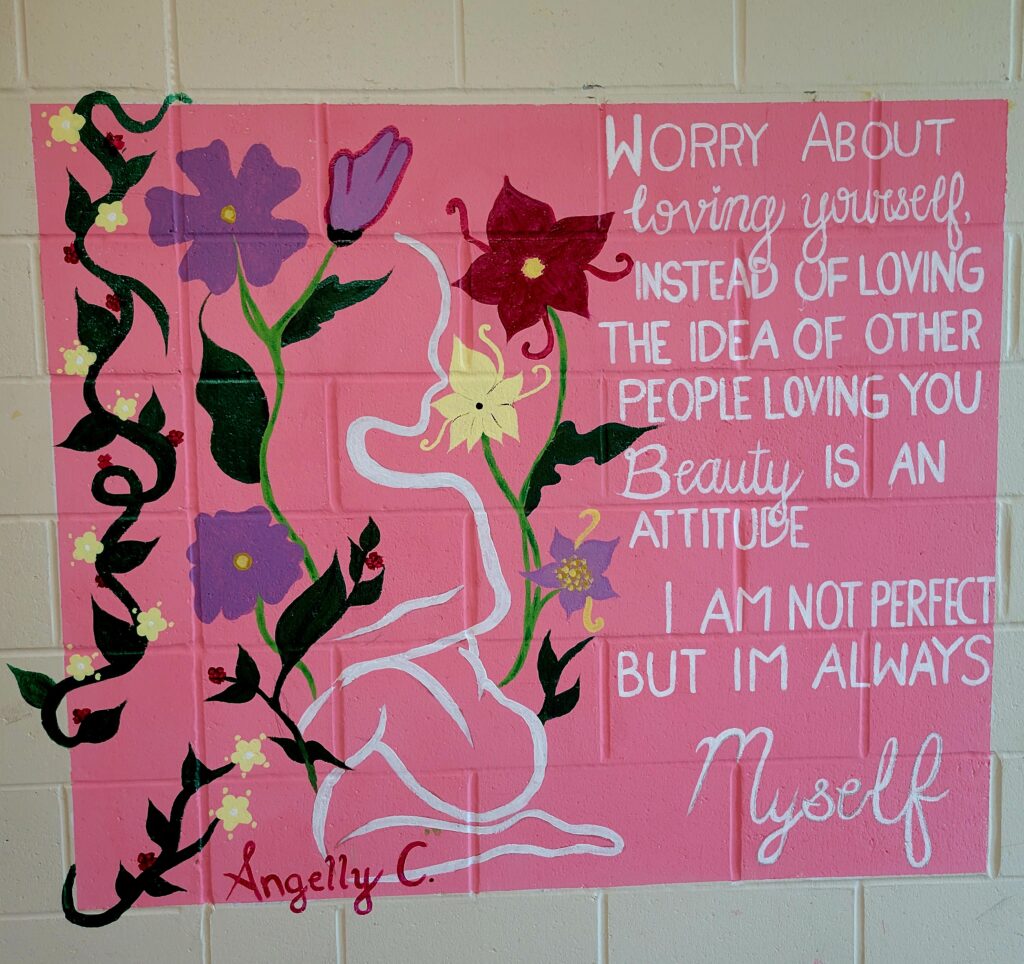
This mural is by a young artist with exceptional skills. She freehanded all the lettering without any errors and kept them all straight and evenly spaced. That’s hard to do. Sometimes students rely solely on one skill that they possess and don’t explore or find deeper meaning in their work. However, this student did. The message is so relevant and vital right now.
And the message seems to be a rebuttal of the negative images and sentiments often found on social media and which can have a detrimental effect on young people’s mental health. Do we have that right?
Yes, this young artist has wisdom beyond her years. And she’s going into 11th grade, so I’m excited that I still have two years to work with her and learn from her.
Several other student works have no words – landscapes, birds in flight, the ocean, a butterfly, a flower and more. What power do these hold?
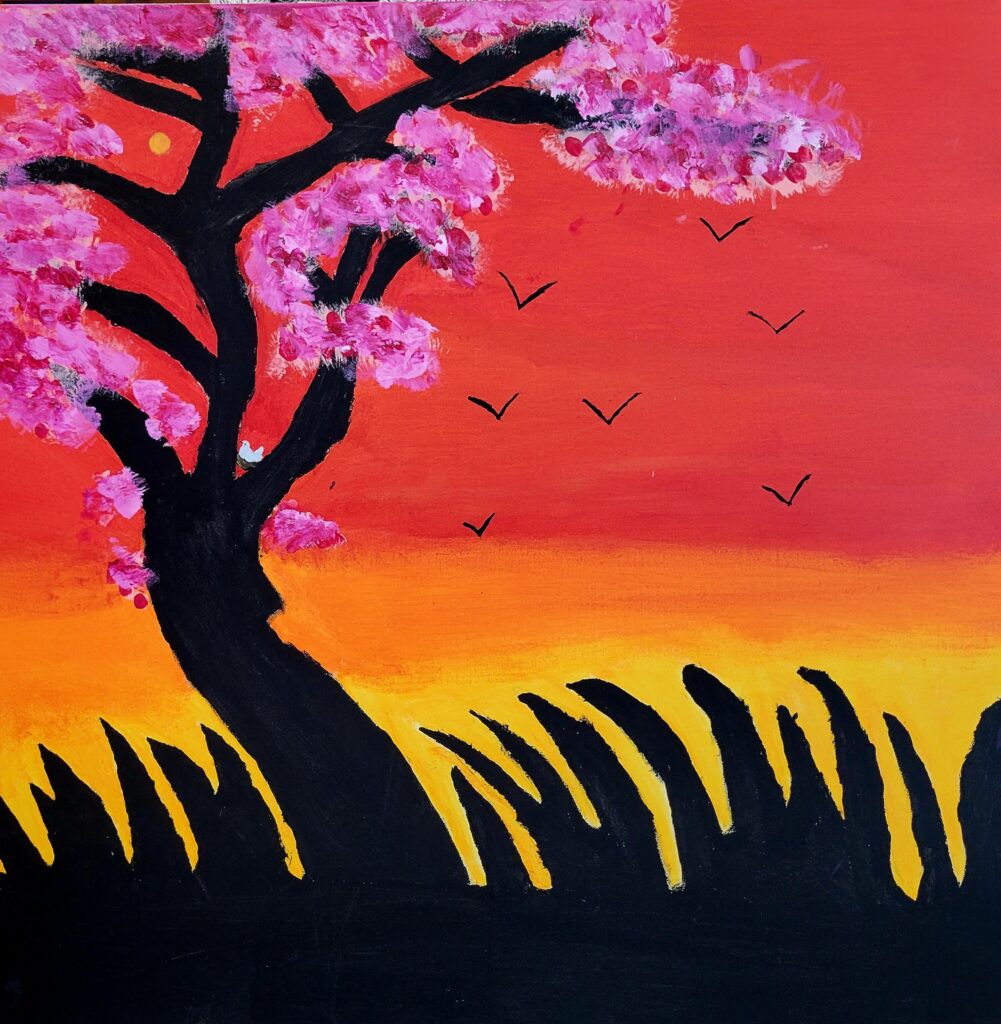
When we first started making these paintings at Juanita Sanchez, they were all murals in our hallways, and they all had social justice themes. They had big energy and taught important lessons. I remember thinking that they students who were painting them were actually teaching all of the successive students who walked through the halls. Many years later, we’re at the point, where we don’t have to be so aggressive with these grand social justice statements… though they are always more than welcomed. Now JSEC’s young artists can be softer, more introspective, more focused on the beauty they see in life. It’s like they’re being supported by the strength of the messages painted in early years and they can allow themselves to relax and play a little while they’re in the art studio.
What advice would you have for young people – and older people, for that matter – who might want to create art, for whatever reason?
Enjoy the process of creation. Don’t worry about the product. There are no rules, create anything and everything… including a meal, a home, a life. Don’t get hung up on any art form. Creative energy is Divine, and we all need to tap into it.
Finally, we note that you are studying Expressive and Creative Arts down here at Salve Regina University. Please expand on the program and your ambition.
YES! I’m very excited about this new phase of my life. It’s emerging so I don’t know exactly how it will come together. I found the Expressive Arts program at Salve after having a very vivid dream where my soul sent me a clear message to find the intersection of visual art and dance. I knew that would lead me in a new, vital direction on my life’s path. I had just participated in my first Biodanza class and I was absolutely smitten. I needed to figure out how to incorporate dance into my life in a big way. The morning after the dream, I woke to a persistent energy that, by early afternoon, led me to speak on the phone with Christopher Carbone, the director of the Expressive and Creative Arts program. Our conversation felt auspicious, and I committed to the program immediately. Soon after, I also committed to the Biodanza facilitator training program with Caroline Churba an internationally renowned Biodanza teacher. I’ve been participating in both programs simultaneously. They are both outstanding educational opportunities packed with extensive academic theory and skill-building, as well as the mystical, delightful, and healing qualities that draw so many of us to the Expressive Arts. Both programs inform one another, so I feel that my learning is exponential.
My first intention is to bring my learning into my classroom at JSEC. During my most recent class at Salve, Expressive Sound and Music for Creativity and Healing, I developed a plan to incorporate sound and music into my visual art classes. I hope to infuse other expressive modalities as well, including Biodanza. I know that a multi-modal approach will be a huge benefit to my students. I’ve always taught visual art expressively, so opening to other art forms will just expand the range of opportunities.
I feel that the work I started back in my master’s thesis has come full circle. Almost 20 years later, after working hard in my own visual art classroom to figure out how it could be a place of healing, venturing into new territory. It’s very special that it’s happening at Salve. My Mom, the person who insisted I get a teaching degree, is a very proud graduate of Salve Regina University. This month is her 80th birthday. She’s an incredible mother and I’m happy to be able to begin this next chapter of my life with a post graduate degree from her Alma Mater.
Eventually, my intention is to work with adults. This is the part that I’m still feeling into. I don’t want to rush it. I want to let it develop in its own time. I believe in the power of Expressive Arts and I want to share their magic with the world.

